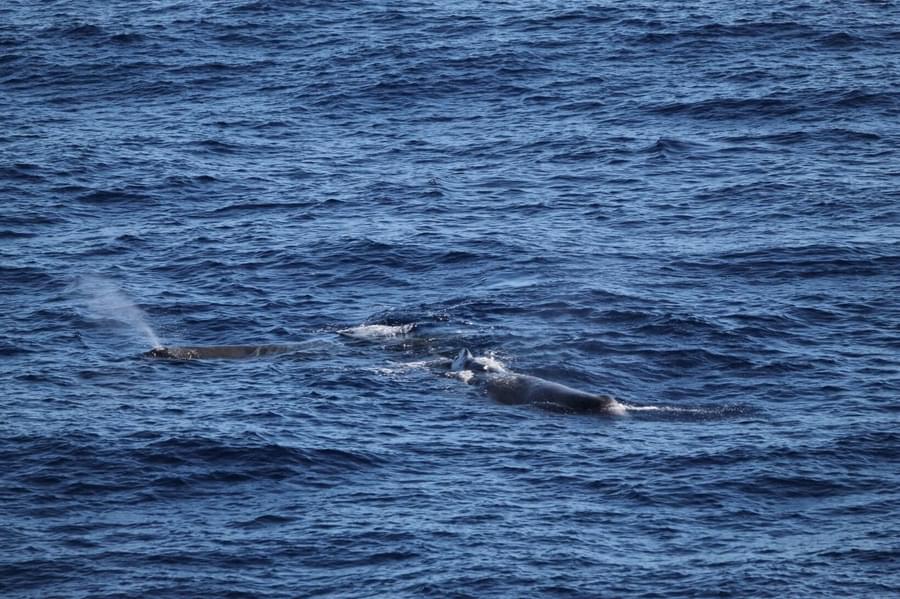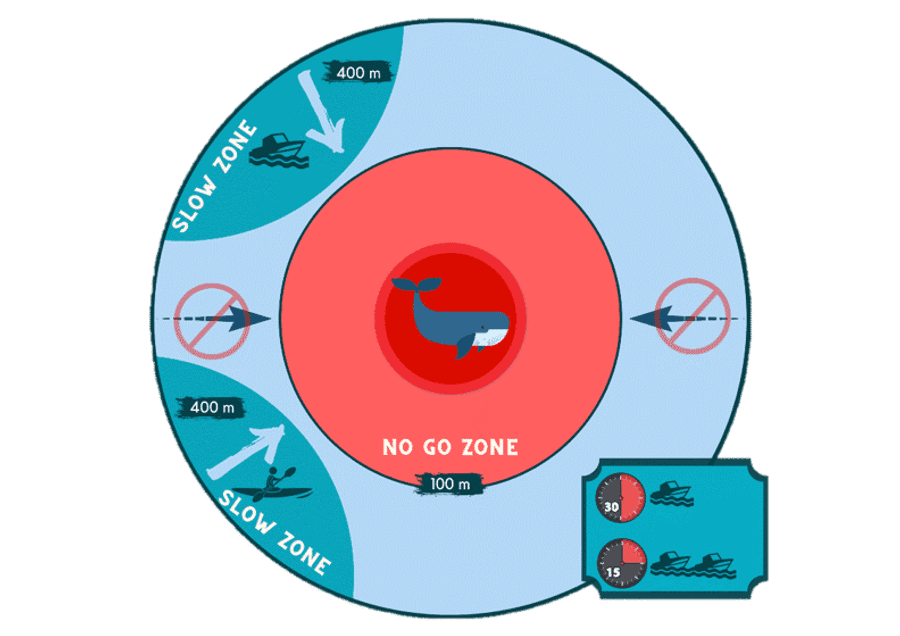Observing whales, dolphins and porpoises undisturbed in their natural environment is a wonder to behold. This is one of many reasons why it is important to understand and respect responsible whale-watching practices. First developed in 1996 by the International Whaling Commission (IWC), responsible whale-watching is a form of eco-tourism that enables you to watch cetaceans and other marine wildlife while behaving respectfully. It manages the potential impacts to the animals being watched and allows them to dictate the nature and duration of the interactions. Responsible whale-watching also gives value to the whales and dolphins and allows researchers and members of the public to gain a wider understanding of their complex habitats and behaviours.
Responsible whale watching was introduced after centuries of commercial whaling in the 17th - 19th centuries, which devastated some of the most productive oceans around the world. Historically, whaling was not just a financial driver for economic growth, but for many, a national identity, a culture and tradition. The Azoreans in particular learnt their skills from the Americans traversing the North Atlantic in search of valuable goods and services to better sustain their growing economies. Many Azoreans spotted a golden opportunity and made the treacherous journey over to the east coast of America to learn and develop their whaling skills to put into practice back home in the Azores. Due to the variable topography, bathymetry and productivity of the region, the Azores was an ideal spot for whale hunting. The deep-sea canyons found around the archipelago boasted some of the world’s most prey-rich waters, providing a feast for deep diving cetaceans. Over 26 cetacean species frequented the area, and among them, the heavily targeted sperm and fin whales. Commercial whaling around the Azores continued for over a century before Portugal signed the IWC’s moratorium on international whaling in 1982, prohibiting commercial whaling of any kind. Nowadays “vigias”, the static lookouts previously used by whalers to spot cetaceans, have been given a new lease of life and are used by eco-whale tours to observe cetacean activity from land. Observers radio local whale watching companies with sightings information, which improves coordination of boats arriving near a sighting and reduces the level of disturbance caused to the animals.

Irresponsible whale-watching can cause and exacerbate a number of threats towards cetaceans. An excessive number of vessels in the area can disturb and be perceived as trapping the animals. Several vessels at one time can also increase the risk of collision and injury to the animals as we don’t know how they are going to react. The animals can be struck by the bulbous bow, hull and propeller of the vessel. Underwater noise can also pose an issue to cetaceans as this can interfere with their navigation and communication. Toothed whales in particular have sensitive inner ear structures and rely heavily on a process called echolocation to function. Underwater noise from vessels can impair the echolocation process and disrupt feeding and other necessary behaviours. Irresponsible whale watching can involve chasing and harassing the animal. This can alter the behaviour of the animals and disrupt key teaching mechanisms and bonding events, especially between mothers and calves.
In order to mitigate the threats cetaceans face from irresponsible whale watching, it is imperative that boat operators and anyone with the interest of viewing whales, dolphins and porpoises in the wild, follow a strict code of conduct. Vessels have a ‘slow zone’ which is usually within 400m of the animals. If there are more than two boats within the vicinity, the third must wait behind the slow zone or caution zone before approaching. There is a ‘no go zone’ within 100m of the animals being observed. You should also not approach from in front or behind, but approach slowly alongside, within the respected distance. Absolutely no chasing of the animal is tolerated and your encounters should only last between 15 – 30 minutes. Any signs of distressed or aggravated behaviour displayed by the animals means you should create space by backing off immediately and safely.

Responsible whale-watching on the other hand, has the potential to create conservation net-gain for whales, dolphins and porpoises. Educational whale-watching tours offer a first-hand experience and provide a valuable platform to raise awareness and aid conservation efforts for these incredible creatures. Responsible tours can facilitate scientific findings and reduce knowledge gaps that exist in cetacean research. It also offers audiences from all walks of life an opportunity to view these magnificent giants in the wild, natural and free. At ORCA, we strive to see our oceans alive with whales, dolphins and porpoises and it is made possible by encouraging responsible whale-watching practices. Here are some top tips!
- Respect the animals!
- Let the animals decide whether they interact with us, not the other way around
- Keep a respectful 100m+ distance from the animals
- Reduce noise as much as possible
- Sustainability and environmental awareness is key!
Main photo credit: Bettina van de Wetering

